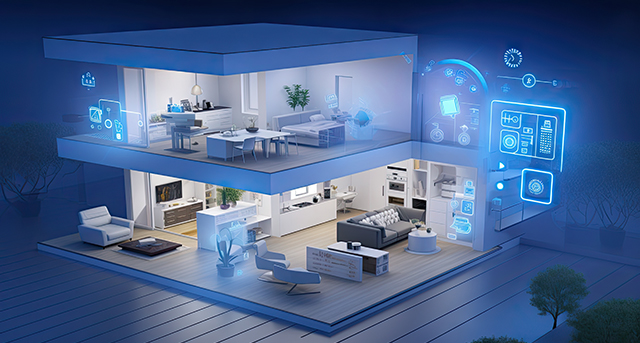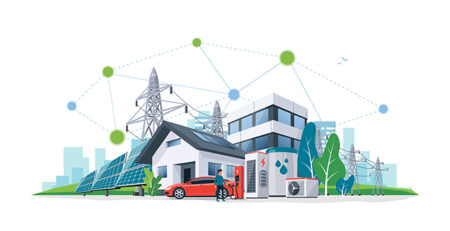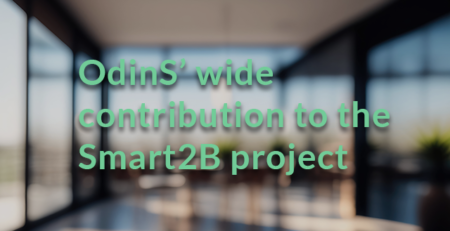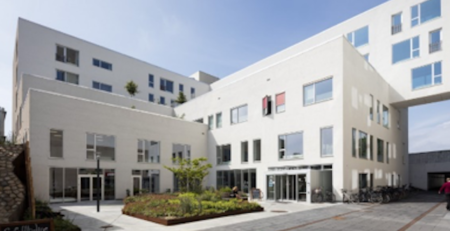The experience of CERTH in Smart2B: a journey of innovations and challenges
The Centre for Research & Technology, Hellas (CERTH) has been a key participant in the Smart2B project, which aims to elevate the smartness of existing building equipment to higher levels. Our involvement has spanned several critical areas, focusing on improving energy efficiency and building management through innovative solutions such as semantic annotation tools, data healing techniques, predictive maintenance, air quality assessment, and load scheduling services. This blog post highlights CERTH’s main activities, achievements, challenges, and future vision within the Smart2B project, with a focus on Work Packages 3 and 4.
Main Activities and Achievements
Semantic Annotation: One of our primary tasks was the appliance classification within the Semantic Annotation module. This involved using plug-meter devices to monitor and manage energy usage across various appliances. The challenge was to automate the identification and annotation of these devices, especially in large-scale installations.
What we have achieved:
- Developed a Semantic Device Annotation tool that automates the classification of appliances based on energy consumption patterns.
- Enhanced real-time energy management and knowledge base through enriched Linked Data.
Data Healing: The Data Healing module ensures the reliability and accuracy of data collected from sensors within the Smart2B ecosystem. This module focused on real-time data filtering and correction, essential for maintaining system reliability.
What we have achieved: - Created an automated data healing pipeline that processes data every 15 to 60 minutes, ensuring up-to-date and accurate information.
- Implemented tools for detecting and correcting outliers and duplicate data, and for imputing missing values using reliable techniques.
Air Quality Assessment: Maintaining indoor air quality is crucial for health and productivity. We developed models to predict CO2 levels and recommend optimal ventilation actions to ensure air quality.
What we have achieved:
- Created a deep learning-based model to predict CO2 levels for the next hour.
- Developed an efficient predictive model to determine the optimal duration for window openings to maintain safe CO2 levels.
Predictive Maintenance: Predictive maintenance focused on fault detection in fridges, washing machines, and HVAC systems. By analyzing Active Energy Consumed (AEC) data, we developed models to detect malfunctions early.
What we have achieved:
- Developed machine learning models to detect faults in domestic appliances and HVAC systems.
- Successfully applied these models to pilot data, demonstrating their effectiveness in real-world scenarios.
Load Scheduling Service: Our load scheduling service aimed to optimize energy consumption patterns for HVAC systems and shiftable white goods. Using Reinforcement Learning (RL), we developed a sophisticated system that schedules appliance use during lower energy price periods, balancing cost efficiency with user comfort.
What we have achieved:
- Implemented RL-based load scheduling for both HVAC systems and shiftable appliances.
- Achieved cost reductions by strategically shifting energy consumption to cheaper periods. Additionally, the service effectively utilizes PV energy production and peak shaving functionalities to enhance efficiency.
Stories and Challenges
Collaboration was key during the development of the Smart2B project: in fact, we encountered numerous opportunities for creative problem-solving and innovation and collaborative efforts across teams with diverse expertise significantly enhanced the functionality and efficiency of our systems. This highlighted the value of interdisciplinary collaboration in achieving groundbreaking results.
Another interesting aspect was the real-world deployment of the solutions developed by CERTH for Smart2B: this included environments such as residential homes, and therefore presented unique challenges. Ensuring proper sensor placement and preventing accidental disconnections underscored the need for resilient and user-friendly designs that can seamlessly integrate into everyday settings.
We had to face also technological and data challenges: developing scalable solutions that could integrate predictive models into real-time building management systems was complex. Balancing the need for immediate response with predictive reliability required sophisticated algorithms. At the same time, transitioning from synthetic to real-world data posed significant challenges, including data sparsity and imbalance. Ensuring that models trained on synthetic data could generalize well to real-world conditions required extensive validation and tuning.
Vision for the Future
Looking ahead, CERTH is dedicated to enhancing the accuracy and applicability of our innovative solutions. Future efforts will focus on:
- Conducting extensive, long-term studies to evaluate and improve the robustness of our technologies in diverse scenarios.
- Incorporating additional variables into our predictive algorithms to refine their precision, reliability, and response time.
- Expanding our AI framework to cover a wider range of energy systems, ensuring comprehensive and sustainable building management solutions.
Conclusion
CERTH’s involvement in the Smart2B project has been a journey of innovation and challenges, driving forward advancements in smart building management. By developing sophisticated tools for semantic annotation, data healing, load scheduling, air quality assessment, and predictive maintenance, we have contributed significantly to creating more efficient and sustainable building management practices. We look forward to future collaborations and continued innovation in this exciting field.
by Georgios Karatzinis, Information Technologies Institute, Centre for Research and
Technology Hellas (CERTH), Thessaloniki, Greece













